#sehzade sultan daughter of selim i
Note
Thanks for your last answer, buddy. But I was expecting to hear your own explanation as you are studying it for a long time. However, it is okay. Can you please tell us what is the stipend of sultanzade and hanimsultan?
Oh well, I definitely haven't studied this for longer than Leslie Peirce, who is a professor. I put her quote in my answer to you because I think that's the reason why Handan's stipend was comparably lower than Safiye's, who kept receiving 3,000 aspers a day until she died.
I don't know about Sultanzades, but Hanımsultans are a complicated matter: in general, their stipend depends on whether they're related to the reigning sultan or not, and whether they're princesses of the Enderûn (Inner palace) or Bîrûn (Outer palace).
(Enderûn means that they had lived - sometimes in their lives - in an Imperial Palace — Topkapi or the Old Palace —, Bîrûn that they had never lived in an imperial palace and were, therefore, third-generation princesses)
During Süleyman I's reign the general rule was that adult and married daughters of sultans received 200 aspers per day and granddaughters of sultans received 100 aspers, it didn't matter whether they were related to the Imperial family through their father (and were, therefore, Sultans) or through their mothers (and were Hanımsultans)
Examples:
(table is from Les Perles de Nacre du Sultanat by Juliette Dumas and is dated November 1555 - November 1556)
I know the table is in French but I think it's quite self-explanatory. For the sake of our argument, we'll take a look at the first row only: émoluments, which are the fixed stipends

Both Şehzâde and Şâh Sultan were daughters of Selim I's and therefore Süleyman I's sisters: they receive the same stipend. What is interesting is that both Ismihan Sultan and Ayşe Hanımsultan receive the same stipend: the former descends from a prince, the latter from a princess (the aforementioned Şehzâde)
(notice that Ayşe Hanımsultan is called Ayşe Sultan in harem registers. As I have said many times, Süleyman I's reign is a period of both revolution and stabilisation for women's titles)
Now onto princesses of the Bîrûn (in the same time-lapse: November 1555 - November 1556):

We're going to focus on the last three princesses. As you can see the one descending from a male has a slightly higher stipend than the two descending from a female.
The hierarchy of princesses in the XVI century was, therefore:
daughters of sultans
granddaughters of sultans
great-granddaughters descending from a male (ie. a prince)
great-granddaughters descending from a female (ie. a princess)
As you can see for Mihri Hatun, the daughter of a Hanımsultan did not have a title but still received a stipend from the Imperial treasury. Mihrî Hatun's descendants were considered complete commoners and did not have a tie to the Dynasty.
Fast forward to the beginning of the XVII century and we can see that the hierarchy has become more complex:
this table is dated May 1603 - May 1604, between Mehmed III's and Ahmed I's reigns

As you can see here, the first three princesses — Gevherhan, Ayşe and Fatma — are all daughters of sultans but Ayşe and Fatma are daughters of the reigning Valide Sultan and therefore receive a higher stipend. Dumas incorrectly identifies Gevherhan as a daughter of Murad III's with an unknown concubine but she's actually Selim II's daughter (which is why she's mentioned first after the two valide sultans— she's the eldest princess alive)
What we need to focus on — for the sake of our argument — though are the princesses I have circled: Ayşe Sultan, widow of Ahmed Paşa is actually Ayşe Hümâ-Şâh, Mihrimah's daughter. Hatice Sultan, is the daughter of Gevherhan and therefore granddaughter of Selim II.
Technically, Hatice and Ayşe Hümâ-Şâh have the same rank: they're granddaughters of sultans. So why the different stipends? Ayşe Hümâ-Şâh benefits from her mother's "aura". Mihrimah Sultan was the "greatest princess of the empire", with a lofty stipend of 600 aspers a day during Murad III's reign (when she died). For context, Safiye received 700 aspers as Haseki.
No princess would ever earn so much.
The 6 şehzâdegân (which just means 6 princes/princesses) may be Mehmed III's daughters, who were unmarried and therefore their stipends were low (in very practical terms: as they did not have a household to manage because they lived in a room inside Topkapi, they didn't need a higher stipend)
The hierarchy of princesses at the beginning of the XVII century was, therefore:
princesses born from the haseki sultan who subsequently became valide sultan
the other princesses, born from non-haseki concubines
granddaughters who benefit from their mothers' rank
the other granddaughters
great-granddaughters
As Dumas concludes:
Contrary to the Ottoman principle of blood transmission, which (officially) only takes into account the paternal lineage, the importance of mothers predisposes their daughters to a certain preponderance over their half-sisters. The hierarchy also tends to produce a stronger distinction between daughters and granddaughters (between sultans or hanım sultans) and the third generations, put a little jumbled up in a sub-category that annihilates any individual specificity.
If you're interested, this is what a harem register looked like:
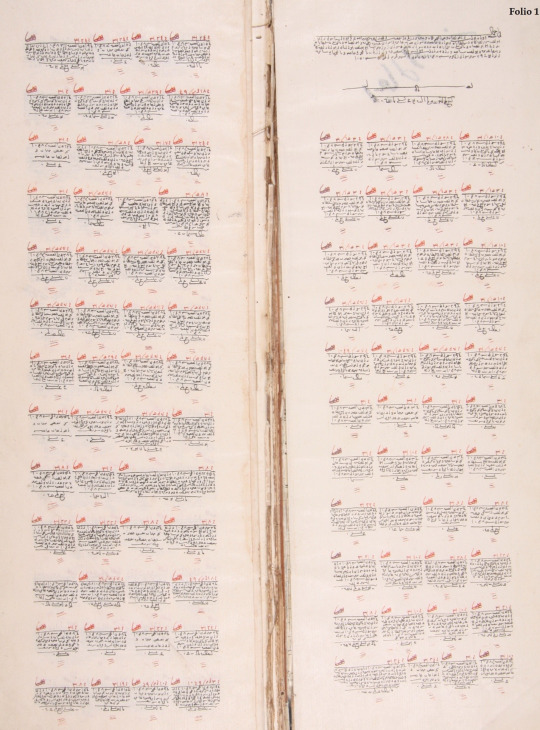
In the XVI century, the stipend of Şehzades was 100 aspers when they resided in the Palace. I guess the stipend of Sultanzades paralleled those of Hanımsultans.
#ask post#ask: ottoman history#ottoman harem#ayse humasah hanimsultan#sehzade sultan daughter of selim i#sahihuban sultan daughter of selim i#gevherhan sultan daughter of selim ii#ayse sultan daughter of murad iii#fatma sultan daughter of murad iii#kadinlarsaltanati
42 notes
·
View notes
Photo

Family of Bayezid II (quite big lol)
+1 information about the daughter of Mahmud, Ayşe: She surely was still alive between November 1555 and November 1556 since she is listed in Old Palace register with a daily stipend of 70 aspers.
The same 70 apsers daily stipend was given to Sehzade Ahmed’s unnamed daughter. We dont know if this stands for Kamer, Fatma or the unknown daughter.
About his daughters:
Selcuk Sultan 1459-1508
- mother unknown
- she married twice: 1/Ferhad Bey in 1484; 2/Mehmed Bey in 1486
- she had five children: 1/ Nesl-i Şah who died in 1564, she married Halil Paşa in 1510; 2/Gaazi Husrev Bey who was governor of Sarajevo, which he developed into a great city, then he was governor of Smederevo (1521), governor of Bosnia (1526-1533), then governor of Belgrade in 1533 and again governor of Bosnia from 1536 to 1541. He died in Sarajevo and was buried there. 3/ Hanzade who married her cousin, a son of Ilaldi Sultan 4/ unnamed princess who married the son of Halil Paşa (her eldest sister’s husband) in 1510; 5/unnamed princess who married twice, the first time to Grand Vizier Yunus Pasha and the second time to Defterdar Mehmed Çelebi (later Grand Vezier and Egypt governor)
Ayşe Sultan 1465 - after 1515
- she may have been sister to Şehzade Ahmed or to Şehzade Korkut. Ahmed was born in 1466 Korkud in 1467 so Ayşe surely was born before them.
- she married Güvegi Sinan Pasha in 1480 and had several (at least 6) children but we don’t have information about each one of them: 1/ GevherŞah who married one İbrahim Bey 2/ KamerŞah who married the son of Grand Vizier Mesih Paşa 3/ Fatma who married another son of Grand Vizier Mesih Paşa 4/ Ahmed Bey; 5/ Mustafa Bey; 6/Hanzade Ayşe Mihrihan who later married Dukaginzade Sultanzade Mehmed Paşa and had a daughter Mihri Hatun, who surely was alive between 1555 November and 1556 November.
- she built a mosque and a school in Gallipoli and in 1505 she established a foundation
Hatice Sultan 1465 - 1500
- the identity of her mother is unknown
- she married to 1/ Müderris Kara Mustafa Pasha around 1479 and had two children with him: Ahmed Çelebi (1480?-1500) and Hanzade; 2/ she married Faik Pasha after 1483
- she built a mosque, school and fountain in Edirnekapi
- she was buried in Bursa in the Hatice Sultan Tomb, built by her son
Gevherimülük Sultan 1467 - 1550
- mother unknown
- she married to Ahmed Pasha and had 2 children: 1/ Nesli Şahwho died in 1559, she married Dukaginzade Iskender Pasha; 2/ Mehmed Pasha who died in 1557, was governor of Aleppo and Egypt, he married his cousin Ayşe Hanzade Mihrihan, daughter of Ayşe Sultan
- she built a school near the Zal Mahmud Pasha Mosque, and she was buried there
Şehzade Hundi Sultan 1465(?) - 1511
- some suggest a birth date of 1470 but it is not correct as she was the daughter of Bülbül Hatun and so Şehzade Ahmed’s sister. Ahmed was born in 1466 so Hundi had to be born before him.
- Hersekzade Ahmed Pasha was her husband from 1484 and had children with him: 1/ Mustafa Bey who was governor of Bozok and died in 1533 killed by rebels in his province; 2/ HümaŞah who died after 1551; 3/ Musa Bey
Ilaldi Sultan ? - before 1518
- mother unknown
- she had two children with her husband Hain Ahmed Pasha: 1/Aynişah who died after 1531 and married Abdüsselam Çelebi; 2/ unnamed son who married his cousin, the unnamed daughter of Selçuk Sultân
- she wrote a congratulation letter to Selim I
Aynişah Sultan 1464(?) - after 1512
- daughter of Şirin Hatun and sister of Şehzade Abdullah (b. 1465)
- she married Akkoyunlu Damad Göde Ahmed Bey in 1490 and had children: 1/ Hanzade who married to Yahyapaşazade Gaazi Küçük Bali Paşa; 2/ unnamed princess who married Şehzade Alaeddin, one of Şehzade Ahmed’s sons
- she built a school in Istanbul and established a foundation in 1506
- she sent letters of congratulations to Selim I when he became sultan
Hüma/Hümaşah Sultan ? - after 1504
- mother unknown
- she married Antalyalı Bali Paşa around 1482
- she was buried in Bursa
Kamer/Kamerşah Sultan ? - ?
- she was the daughter of Gülruh Hatun
- she was married to Damad Nişanci Kara Davud Pasha, with whom she had a daughter who later married one Mesih Bey.
- she was buried in the tomb of her mother in Bursa
Şah/Şehzade Şah Sultan ? - after 1506
- her mother is unknown
- she married Nasuh Bey around 1490 and had a daughter
- she was involved in charity
- she built a mosque in 1506
- she was buried in her sister Hatice’s mausoleum in Bursa
Sofu Fatma Sultan 1466(?) - after 1515
- she was the daughter of Nigar Hatun and sister of Şehzade Korkut and since Korkut was born in 1467 so actually Sofu Fatma should born even before 1464/5/6.
- she married Güzelce Hasan Bey around 1504 and had two children with him: 1/ Mehmed Çelebi who later married Ayse Sultan daughter of Şehzade Alemşah; 2/ unnamed daughter who later married Ahmed Bey, son of Ali Bey and Fatma Hanımsultan
- about her marriages it is possible she had a first marriage which is not listed by most historians (she would be too old for a first marriage in 1504). She should have a first marriage around the early 1480's. About the identity of the first hubby: Öztuna claims Sofu Fatma's firs husband was İsfendiyâroğlu (Cândâroğlu) Mirza Mehmed Pasha, son of Kyzyl Ahmed Bey. Öztuna gives no marriage date. The problem is, Fatma remarried in 1504 but the pasha was alive until 1530. I don't see why would they divorce, so well I don't know. Öztuna claims they had a son, Mehmed Bey, together who later married Selim I's daughter Gevherhan. Its fine Fatma's son Mehmed did marry Gevherhan okay. But then why would she name her second son also Mehmed? Because she had a son Mehmed from her second marriage who married Ayse Sultan daughter of Şehzade Alemşah. So just why 2 Mehmeds? I dunno this... Maybe one of the names is mistaken?
- she was charitable --> left all her possession to the poor when she died
- she was buried in the tomb of her half-brother Şehzade Ahmed in Bursa
Sultanzade Sultan ? - ?
- daughter of Hüsnüşah Hatun and sister of Şehzade Alemşah
#Bayezid ii#Ayşe hatun#ayşe#ayse#bülbül hatun#bülbül#ferahşad hatun#ferahsad#hüsnüşah hatun#husnusah#ayşe gülbahar hatun#ayse gülbahar#gülbahar#gulbahar#gülruh hatun#gulruh#nigar hatun#nigar#şirin hatun#şirin#sirin#Abdullah#Ayşe sultan#Hatice Sultan#Ahmed#Korkut#Gevherimülük Sultan#gevherimülük#gevheri#hatice
27 notes
·
View notes
Text
Seniha Sultan (5 December 1851- 15 September 1931)
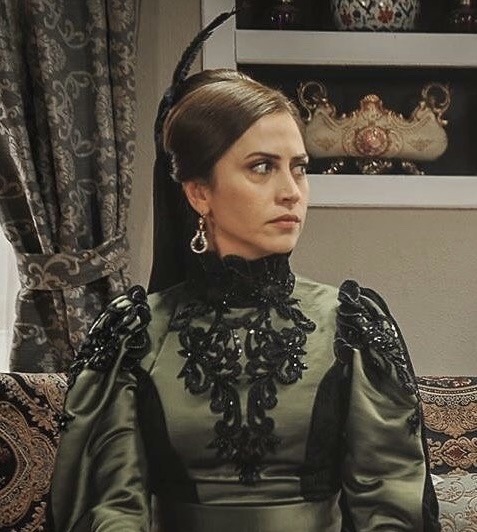
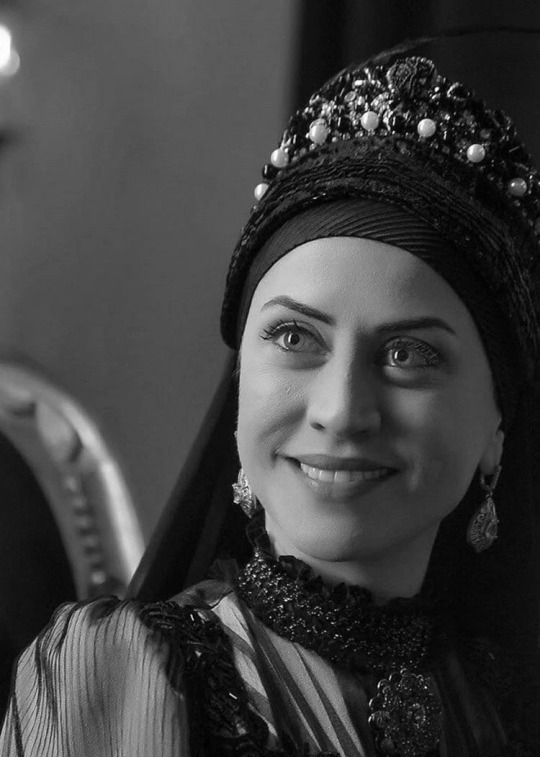
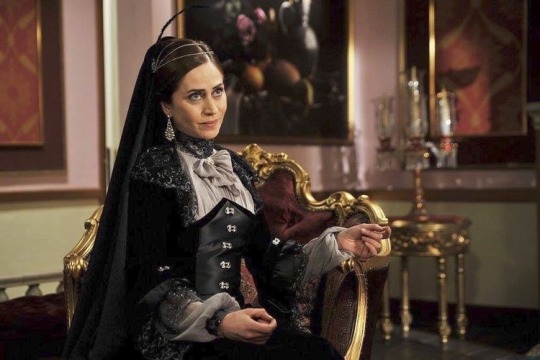
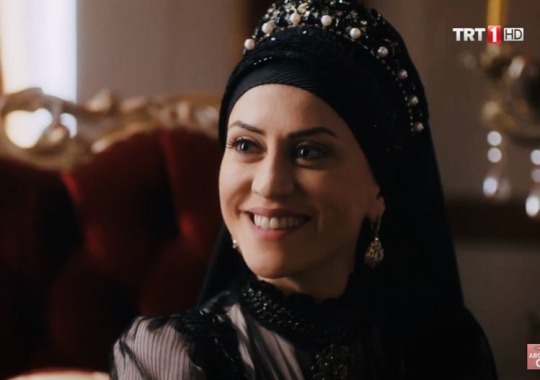
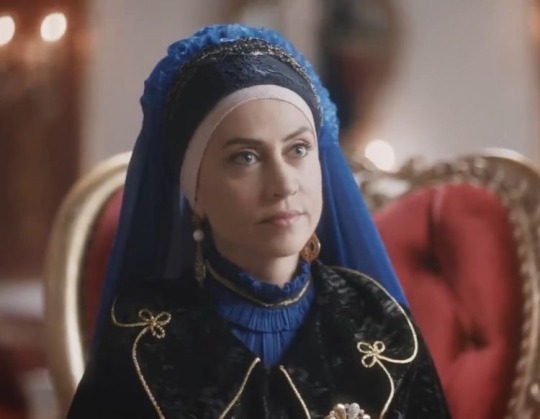
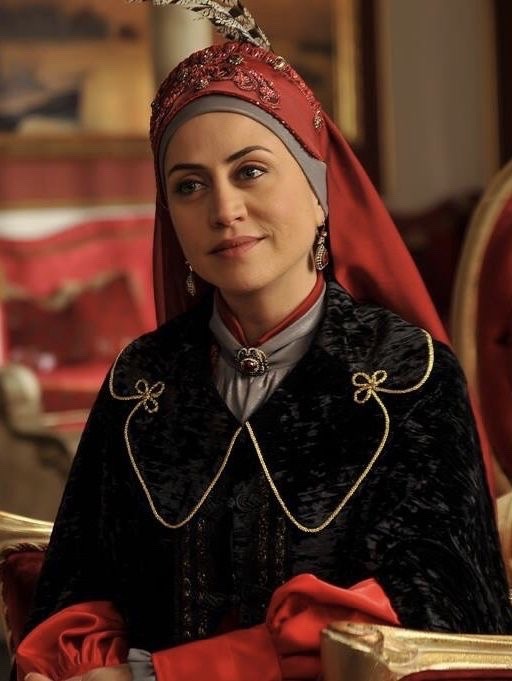


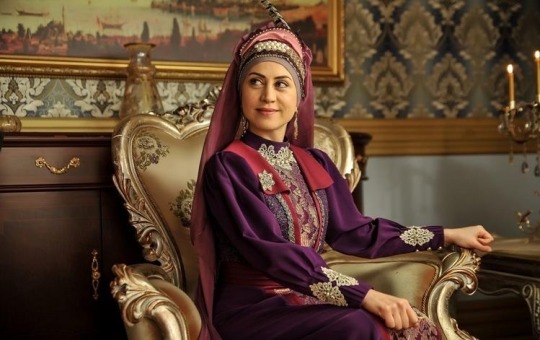
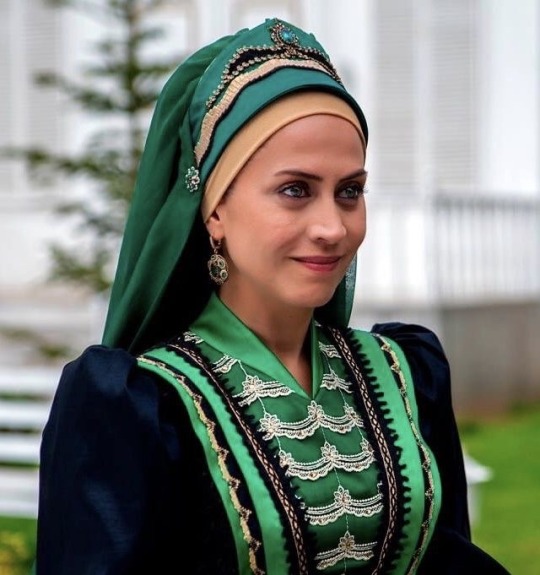
Daughter of Abdulmejid I and Nalandil Hanim
Wife of Mahmud Celaeddin Pasha
Mother of Sultanzade Sabahddin Bey and Sultanzade Ahmed Lutfullah Bey.
Sister of Sultans Murad (half), Abdul Hamid II (half), Mehmed V (half), and Mehmed VI.
Aunt of Sehzade Mehmed Selaheddin, Hatice Sultan (Murad), Fehime Sultan, Fatma Sultan (Murad), Aliye Sultan, Sehzade Mehmed Selim, Ulviye Sultan, Zekiye Sultan,Sehzade Ahmed Nuri, Naime Sultan, Sehzade Mehmed Abdulkadir, Naile Sultan, Sehzade Mehmed Burhaneddin, Sadiye Sultan, Ayse Sultan, Refia Sultan, Sehzade Abdurrahim Hayri, Hatice Sultan (Abdul Hamid II), Sehzade Ahmed Nureddin, Sehzade Mehmed Abid, Samiye Sultan, Sehzade Mehem Ziyaeddin, Sehzade Mahmid Necmeddi, Sehzade Omer Hilmi, Fenire Sultan, Ulviye Sultan (Mehmed VI), Sabiha Sultan, and Sehzade Mehmed Ertugrul.
Mother-in-law of Tabinak Hanım
7 notes
·
View notes
Text
❝ ⤚⟶ EUROPE, 1458. thanks is given by the SULTANA MIHRIMAH SULTAN, from THE OTTOMAN EMPIRE. they are at best POLISHED, and at their worst FORCEFUL. whilst abroad, their ambition is to SUPPORT HER OLDER BROTHER AND SEEK A POSITION WORTHY OF HER STATUS AMONGST HER FATHER’S PLANS. SHE seems to remind everyone of BESTE KÖKDEMIR & THE SENSATION OF SILK AGAINST BARE SKIN, THE ROCK OF THE OCEAN SPLASHING AGAINST THE UNDERBELLY OF A SHIP & THE FLUSH OF FEATHERS BEATING AGAINST A GILDED CAGE.❞

and finally… (for now) i offer you the beautiful mihrimah !!
STATS.
full name — mihrimah (persian - ”light of the moon”) sultan (child of the sultan)
titles — sultana of the ottoman empire (imperial princess)
birthplace — edirne, eastern thrace, ottoman territory
age — twenty (20)
languages — ottoman turkish (mother-tongue), arabic (fluent), persian (few dialects), ottoman sign language (fluent), english (learning), french (learning), greek (few dialects)
dynasty — osman
mother — haseki sultan nehir
father — sultan iskender
spouse — n/a
issue — n/a
siblings —
older : unnamed son 🕇
older : melek sultan
older : sezhade of the ottoman empire, heir presumptive
older : sultana of the ottoman empire
younger : ilaldi sultan
younger : ayse sultan
younger : hafsa sultan
younger : emine sultan
younger : sittisah sultan
younger : beyhan sultan
younger : sirin sultan
younger : sehzade kasim
younger : unborn sultan
other —
grandmother : valide sultan mahidevran
aunt : hurrem al-barracin
consort to iskender : consort hiranur sultan
consort to iskender : consort branimira of croatia
brother-in-law : grand vizier rondulu selim pasha
courtier - potential suitor : second vizier yazid ibrahim basturk pasha
harem chief officer : chief steward of the imperial harem
courtier : vadim, wallachian boyar of braila
zodiac — gemini
religious affiliation — islam
face claim — beste kokdemir
height — 5′10″
recognisable features — raven locks that fall way past her shoulders, normally covered by a sheer veil but if you see her hair with your naked eye count yourself blessed.
HEADCANNONS
LIFE IN THE HAREM — it is all she has ever known, to be surrounded by love and women who filled her with an inflated ego, a currency known for her beauty and the dulcet tones fit for a woman of her standing. Due to such an upbringing she did not grow up to hate the woman who tore her father’s attention away from herself and her mother, but loyalty was wedged in deep between muscle and bone! The loyalty she upholds for her mother and older brother know no bounds, and may someday be her undoing if the next Sultan does not carry her true blood.
EDUCATION — Educated well, Mihrimah may have made a good Sultan if she had been born a boy. Nonetheless, she used her feminine whims to her advantage. Though, it is perhaps childish to flaunt such beauty in the eyes of men who see it as all they want. With dance and music, she expresses herself - long, delicate fingers playing to the tune to all who dare to listen. Such culture is praised amongst the women of the palace and the Osman dynasty, but Mihrimah plans to use such skills on many unsuspecting men - to wean out the weak from the strong, to unveil the ones who plan to betray her older brother or her father. She is, in her eyes even, a grand piece to the Sultan’s chessboard - if only he plans to use her more often. Her education has provided her with the gumption to take the reigns of an already crowded steps to the throne, but she does not desire such responsibility as of yet. Instead, she seeks to use her tongue (trained in many a language, that may leave the educated advisers of the Western realms at unease). She plans to take to Portugal as an envoy, to act as her father’s spy if needs will it. Though perhaps a spy is far too generous a word since she is not a coy woman and often boasts of her powers and natural features as if there was not an eye to see it.
MUSIC & DANCE — Though music and dance is a passion well-loved by the Sultana, Mihrimah has always found time and obsession with weaving. Her talent is famous amongst the noble ladies of the Ottoman Empire, and often she will display her woven beauties to the visitors and courtiers who peek with nosey eyes. Back within the palace she rarely took a toe outside, the Sultana has her own rooms lined with her art. She is known for it, but some may whisper that she is doomed to spend her life weaving rather than living - such cruel rumours are only laughed off by the Sultana, even if the question of her future hangs heavy around her neck.
LOYALTY — The loyalty she ties to her older brother is immovable. Such trust was born when the two children grew together, sharing tutors and governesses as they ran through the various halls of various estates. To say she loves him is misunderstood, she adores him. To her, he is her Sultan - above their father, and above their mother. But with such love comes danger; if she is to choose between the two men, who should she lay her allegiance with?
WANTED CONNECTIONS.
friends overseas (pen-pals, frenemies, bffs, the lot!), enemies she may sulk around, boys she commands for her own use, allegiances made for her brother the sehzade, allies she may count on to spread her own influence, and perhaps someone who can take her from simple daughter to wife and consort of the utmost importance.
INFLUENCES.
catherine howard (english history)
bathsheba (the bible)
sirens (folklore)
aphrodite (greek mythology)
grimhild (norse mythology)
ramses (the prince of egypt)
amy (young man with a horn)
the comforters (rudyard kipling)
rachel green (friends)
oberyn martell (game of thrones)
joan holloway (mad men)
amy march (little women)
gabrielle solis (desperate housewives)
jackie burkhart (that 70s show)
buffy summers (buffy the vampire slayer)
lady (lady and the tramp)
tahani al-jamil (the good place)
nala (the lion king)
elizabeth swann (pirates of the caribbean)
daisy buchanan (the great gatsby)
scarlet o’hara (gone with the wind)
lydia bennet (pride and prejudice)
princess jasmine (aladdin)
marie (the aristrocats)
madison li (fallout 3)
blanche (a streetcar named desire)
paula (the winter’s tale, shakespeare)
mihrimah sultan (daughter of suleiman i, history)
#crhs.intro#YES#i finally did it#little late but i wanted it out there#hehe#i. / το τελευταίο έγκαυμα ενός λαμπτήρα ελιάς — study.
7 notes
·
View notes
Note
What are your favorite quotes from mc and mck?
oh this is so difficult, there are so many episodes and having to read translations makes it kinda hard to remember actual quotes
here and here i’ve listed my favourite scenes, if you’re curious :D
magnificent century:
hurrem: do not mistake me for someone else, my name is hurrem. i am faithful and loyal to the sultan, and as long as he breathes, the sole owner of the throne is sultan suleyman khan. even if it were one of my sons trying to take the throne, they couldn’t do so without walking over my dead body.
hurrem: i am fighting to stay alive, my sultana. since i’ve come here this is the only thing i have been doing. if i bent my head only for a moment, i would find myself at the bottom of the bosphorus.
hurrem: i too have memories and none of them are as lovely as yours. i was 17 years old when they killed my father, my mother and my sister. i was taken from my family and my home and sold as a slave. you have lived in the avratpazari neighbourhood for so many years, i am sure you have seen a lot of women crying. i was like them; i didn’t know where i would wake up the next day. but they brought me to the palace, and that morning i woke up to the sound of a snow-white pigeon. it was hurt, all alone, just like me. i took it in my hands and kissed it, and i prayed. i prayed that, just like the pigeon, i would fly away and go back home. but i didn’t realise allah had accepted my prayers, because he made the palace my home. i was lucky, because allah blessed me with our sultan’s love and he made me a sultana.
hurrem: i want you to know that everything i do is for your future and your brothers’.
mahidevran, about mihrimah: her tongue is as sharp as her mother’s
mahidevran, about selim: he is like his mother
hurrem: what is a harem? i will rule the world
selim: i’m not addicted to wine, i’m addicted to you
nurbanu: this palace, the rooms of the valide sultan... everything will be mine. the world will change and my time will come.
magnificent century: kosem:
safiye, about nurbanu: i was the head haseki, she did everything to make life miserable for me. then the ring passed to me. the eras changed.
safiye: “A woman fits in many titles and roles in her lifetime. She is someone else at each stage of her lifetime. She is a child. A woman. A mother. If she’s a smart and blessed subject of God she could even become a Sultana. What matters is which title and role you see fit for yourself.”
kosem: i took over this sultanate from your late father. i've died and burned so many times to protect you and your brothers. without me neither the dynasty nor the state would exist now! Now you come here and tell me about the future of the state! What you call "the state" is me... me!
gevherhan to atike: i was never happy, i hope you will be
gevherhan: i’m not strong like you, mother // kosem: you will be, you are my daughter
handan: what do i need the state for if my son dies? what do i need this world for?
handan: I am a sultana; forever in a cage. I am a prisoner.
handan: if ahmed dies, then the whole world can burn for all i care
anastasia: i was a sehzade’s dream
dervish to ahmed: you are the day, we are the night. you are water and we are the barren soil. you are a lion, we are lambs. what i mean to say, your majesty, is now it’s the time to shine like the sun, to cascade like a river, and to roar like a lion
safiye to ahmed: this is your dawn. this breaking day is your day. from now on, the blessed throne of the supreme ottoman dynasty is yours.
i’m sure i forgot a lot but at the moment i can’t remember more, sorry!!
19 notes
·
View notes
Text
The four Haseki and their relationship with beloved Mothers-in-Law
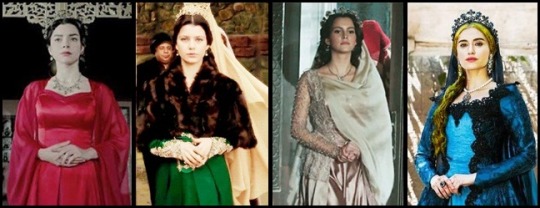
We'll come closer to the end of Kösem sultan and her magnificent story :,(. Now let me present these four ambitious hasekis in different time but lived below the same sky (don’t ask me why I included Ayşe, just keep reading it! ;-) and why I don’t include Hürrem vs Valide Ayşe Hafsa because mainly I forgot their story XP). Hürrem started this "opposing your mother-in-law" continued with Nurbanu to Turhan sultan (only in MY and MYK dear, not historically), but how their stories differ? Let's see...:
Afife Nurbanu Sultan:
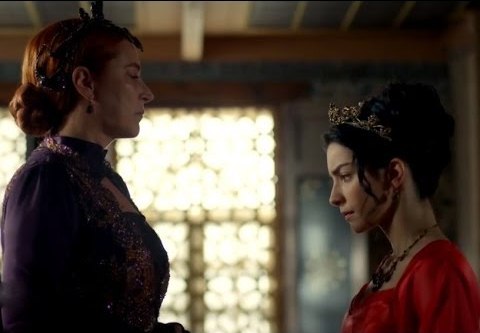
Her mother-in-law was Hürrem sultan, Hürrem wanted her to be a smart but obedient daughter-in-law, she became a gozde (favorite) to sehzade Selim (later Selim II). Iirc, Nurbanu's conflict with Hürrem started when Hürrem refused to protect & defend her after she had fight with Hurichihan (Hatice sultan's daughter) & caused her death. Afraid to the consequence of her deed, she threatened Hürrem to show her letter about ordering Nurbanu to kill Suleyman I's other gozde, Nazenin hatun, from this onwards their conflict began. Other factor that driven Nurbanu is her ambition to support Selim to be the successor, next sultan after Suleyman I, especially after she found that Hürrem was supporting her other son, sehzade Bayezid. Her conflict with Hürrem mainly to prevent and foiled her to support Beyazid. Even after Hurrem's death, Nurbanu was still occupied with Beyazid's remaining supporters (including Mihrimah & Rustem->though Rustem would betray later via Gracia Mendes' seduction (LOL)).
Mahpeyker Kösem Sultan:
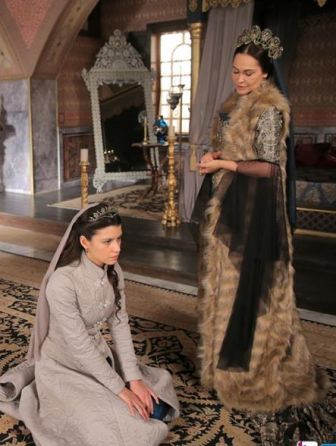
Her actual mother-in-law was Handan sultan, but her nemesis (in the show) was Safiye sultan, Handan's mother-in-law & the grandmother of Kosem's spouse Ahmed I. Similar with Hürrem, Safiye intended to present Kösem to Ahmed and use her to influence & control his power. Their conflict started when Safiye, unable to control Kösem anymore, decided to kill her father. Feeling betrayed, Kösem decided to avenge her father's death (while being a heroine too) by leading Safiye's daughter, Fahriye sultan to her death. Safiye repaid it with Yasemin hatun (Kösem's sister)'s death and Kösem paid it back with Iskender/sehzade Yahya (Safiye's missing son)'s death. Also Kösem being heroine wanted to protect Ahmed and the state from her, especially when Safiye did the coup d'etat, causing chaos in the palace. Not long after, Ahmed died, leaving Kösem with her little children fighting Safiye (and later Halime) alone.
Ayşe Sultan:
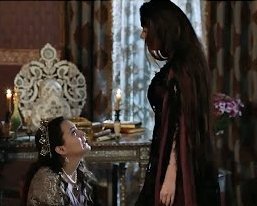
Her mother-in-law was Kösem sultan and her spouse was sultan Murad IV. Like Hürrem and Safiye, Kösem too expected that Ayşe would be an obedient, helpful & easily controlled by her. I think during the very first episode of season 2, there would be a rivalry and conflict between Ayşe and Kösem, how Ayşe said that she wished to support Murad and keep him away from the influence of his mother in ruling the state. Ayşe also said that she refused to follow every Kosem's orders and be obedient to her. Too bad this rivalry concept got thrown out and replaced with her fake rivalry with Farya as Mahidevran 2.0. Ayse's story here would be mainly fanon:
After Kösem's ten years regency, Murad became the sultan officially (I mean, the time when Murad was able to govern the state independently), but with Kösem's influence in the government, viziers & jannisaries, they were already familiar and support her and the people greatly trust her. Murad was struggling to gain the trust and recognition from his people. Everyone (including viziers and jannisaries) still doubted this young sultan's capability to rule, they always compared him to Kösem. Murad wanted to step out from his mother's shadow, he tried to limit Kosem's power and influence, he wanted his mother as valide sultan back to her initial duty, managing the harem. As loyal spouse and his most beloved woman, Ayşe supported Murad and helped him to be able to rule independently by trying to dispel and keep him away from his mother's influence, she also managed to seek the support from the people including some viziers. Ayşe chose to be a good wife and queen/haseki who supported her spouse the sultan in government rather than being used and controlled by his mother. Thus her conflict with Kösem sultan began. Besides her conflict with Kösem, Ayşe also had her own problem, she was struggling to provide Murad a healthy sehzade who would have his chance to survive adulthood and become the heir for Murad's throne. Murad's relationship with his mother was gradually strained. Seeing her son's insubordination to her, Kösem decided to get rid of Ayşe as the mastermind of the destruction of their family relationships. Their rivalry was fierce until Murad's death came. Ayşe who had lost her greatest support (and love) Murad and lost her sehzade who could be made an heir, lost her power, influence and purpose completely. She was immediately removed by Kösem and sent away to live in the Old Palace.
Turhan Hatice Sultan:

Her mother-in-law was also Kösem sultan and she was the spouse of Ibrahim I. Turhan had learned all the tales of the powerful sultana in Ottoman and had her own ambition. She saw Kösem as her role model and at the same time she wanted to be like her. Kösem still expected her to be easily controlled and obedient to her but Turhan thought that being obedient and passive won't make her a powerful figure. She found that to fight her mother-in-law, she had to get her sultan's support. Observing her situation and circumstance, getting the support from her spouse seemed difficult since Ibrahim had numerous gozde that he loved, he even appointed his eight gozde (including her) as his haseki. Turhan could become the Baş Haseki had been a lucky one for her since she had Ibrahim's oldest sehzade Mehmed. The odds of getting support from her spouse are getting smaller as he brought new gozde again and this gozde became his legal wife (Telli Humaşah). Thus, rather than wage an open war to Kösem, she decided to gain the trust for her. By being the closest person to Kösem, she could observe everything, from how Kösem gains her supports to find a chance to overthrow her. During this time, Turhan managed to gain the trust of viziers, but Kösem still had the most influence in jannisaries. Turhan also tried her best to secure her son and protect him as the next heir after Ibrahim's death. When Ibrahim died, Mehmed the oldest sehzade succeeded him. But as long as Kösem still alive, her struggle was not over yet. Kösem who had many experience as regent thought that inexperienced Turhan wasn't competent enough to rule the state, Kösem was preventing her to be in charge of state affairs. Turhan disagreed since she felt entitled as the mother of Mehmed IV. Kösem later went to far by attempting to remove Mehmed and replaced him with sehzade Suleyman (the son of supposedly more obedient haseki Saliha Dilasub). Driven by her will to protect her son's life, Turhan decided to get rid Kösem completely and her men successfully murdered her. Eventually, Turhan became regent and rule the state together with her son. My fanon is that the previous haseki sultan Ayşe wanted have her revenge with Kösem, so she temporarily helped Turhan behind the scene.
Summary:
Many young sultana during their time as queen consort (haseki) had strained relationship with her mother-in-law, the queen dowager (valide sultan), they had similar ambitions but they had their different motivation and situation.
In Nurbanu's case, she was a favorite of Selim II during his sehzade years. There was sehzade Beyazid as threat who challenged Selim's way to be the heir. Being supportive to her spouse, Nurbanu made sure that Selim will success it. Nurbanu's main focused was how Selim would take the throne.
In Kösem's case, she initially was driven by revenge. But later when she found that Ahmed I her spouse's life was also in danger, she fought to protect him. Safiye's failed attempt to control Ahmed drove her to led a coup d'etat. Ahmed with the help of Kösem successfully weakened Safiye's power and influence. But not long after that, Ahmed died and Kösem lost her greatest support. Kösem became alone surrounded with many dangerous snakes especially Safiye and Halime, though in the end she was able to get rid of them.
In Ayse's case, Murad became a sultan who just been deemed worthy to rule by his own. Ayşe helped Murad to gain the trust and to be recognized by his people, she wanted him to get out from Kösem's shadow. Ayşe also had another burden since Murad didn't have an apparent heir yet. In the end Murad died without heir and his brother Ibrahim was the one who succeeded him. Ayşe lost her position and had to spend her life in the Old Palace according to the custom.
In Turhan's case and during her time, Ibrahim I had his eight harem girls as the haseki. Turhan happened to bore him the oldest sehzade Mehmed thus she became the Baş haseki. Turhan had to face her many harem rivals including the greatest threat who was Telli Humaşah, the girl Ibrahim brought and became his legal wife. Turhan was not really loved by Ibrahim (as she was not his most favorite). After Ibrahim's death, Turhan had her power struggle with Kösem sultan. She wanted to be regent ruling independently but her reign always overshadowed by Kösem. Their conflict became worse when Kösem wanted to get rid of Turhan's son and replaced him with her other grandson, thus leading to Kosem's death by Turhan's men hands.
TL;DR
All had their conflict with their MiLs but Nurbanu was haseki of sehzade whereas Kösem, Ayşe and Turhan were haseki of sultans. All supposedly outlived their MiL but canon MYK!Ayşe died before Kösem. Although Kösem had her conflict with her actual MiL Handan, her main nemesis was Safiye sultan, her MiL's MiL (or should I say grandmother-in-law). Nurbanu's spouse Selim I outlived his mother but Ahmed I (Kosem's spouse), Murad IV (Ayse's spouse) and Ibrahim I (Turhan's spouse) died before their mothers (and grandmother in Ahmed's case). Nurbanu, Kösem and Turhan had their surviving sons took his fathers' throne whereas Ayşe didn't. Nurbanu, Kösem and Ayşe were loved and greatly supported by their spouses whereas Turhan was not really (but canon-MYK!Ayşe instead was greatly abused and hated by him), Ibrahim might loved Turhan but she was not his most beloved one. Nurbanu, Kösem and Turhan succeeded in becoming valide sultan and became the most powerful sultana in their respective era whereas only Ayşe who couldn’t make it since she didn’t have a sehzade (the prince), the most important asset for every women as royals.
Conclusion:
Powerful and ambitious women in MY and MYK always expect their daughters-in-law to be the obedient and easily-controlled. Unbeknownst for them, they became the role models of their younger generations. Thus, instead having the obedient DiL, they got their own reflection: the DiL that exactly the same with their younger selves. These DiL won’t easily submit to them just like themselves in their younger days.
Also I wonder when Turhan’s hair color was mentioned as blonde, There is no popular culture that show Turhan with blonde hair. Mahpeyker: Kösem Sultan’s Turhan was brunette and Muhteşem Yüzyıl: Kösem‘s Turhan is dark haired (likely black). I’m sorry with my shitty bad quality editing but I want my Turhan’s blonde XD, I’m not expert.
#valide sultan#haseki sultan#muhtesem yuzyil#muhtesem yuzyil kosem#my thoughts#mother in law vs daughter in law#ottoman empire#hurrem sultan#nurbanu sultan#safiye sultan#kosem sultan#ayse haseki sultan#turhan hatice sultan#haseki ayse sultan's story is mainly fanon#canon!MYK story gave Ayse's story & character injustice#canon!MYK is not historically canon either#respect haseki ayse post#blonde!Turhan
21 notes
·
View notes
Note
Hi just wondering if you can clarify who Selimiye Sultan is? I've never heard of her but seeing the name around a lot, even though Selimiye isn't actually a name? :/
You know, I first heard about her about half year ago and was shocked, cuz I’m a real Nurbanu fan. But still I knew that Selim was quite lustful, but at the same time he prefered the principle “one concubine-one son”. Also I knew about a few sehzades, who was killed because of Murad’s throne succession, among them was Abdullah. Possibly, he was son of Selimiye (there are a few sources confirm it).
It is said that Selimiye was venetian (why not?) and died in Trabzon in 1596 (she was exiled), that means she survived her son’s death. I think that her name sounded in the other way and “Selimiye” (means “belonging to Selim”) just reflects the fact that she was his concubine. It’s really hard to talk about Selim’s favourite cuz Nurbanu was the main and her power was a great pressure for the other ones.
I saw even hilarious stories that Safiye, Mihrimah (who died before Nurbanu) and Selimiye are guilty for Nurbanu’s death.
Also I was surfing through different lists of concubines on turkish language and nowhere Selimiye was mentioned, only Nurbanu.
I also read that she was mother of Gevherhan, don’t think so. Authoritative sourceshave some questions only about Fatma (Uluçay asserts that she was the daughter of Nurbanu, but offers no proof for this statement), but not Gevherhan. She was a daughter of Nurbanu.
10 notes
·
View notes
Note
Can you explain the political marriages between the Ottoman dynasty and the giray dynasty? Some sources claim that Salim's daughter is married to Saadat giray. Can you give me more information about Salim I Harem?
By some sources, I guess you mean Alderson, as he is the only one I could find that says this: un unnamed daughter of Selim I's married Mengili Giray's son and successor, Saadat Giray Han, and had a son with him called Ahmed.

Sakaoğlu doesn't seem to believe this because he could not find any information about this princess, not even when she died or where she was buried.
I have already described Selim I's harem but it's been such a long time and in the meantime I have done some more digging so I am going to talk about it once more.
The harem of Selim I
Consorts
Alderson wrote that he [Selim I] had four wives, three of whom were named Ayşe, Hafsa, and Taçlı Hatun. He claimed that the last one’s name was unknown. Even if he wrote that Ayşe was the daughter of the Crimean Khan, that she was married to Mehmed, Bayezid II’s son, and that Selim married her upon Mehmed’s death at a young age, it is not true. Because we know that during the reigns of Bayezid II and Selim I, Mehmed’s mother and wife were paid and stayed in the Old Palace. According to Hafsa Sultan’s endowment, the woman’s name was Ayşe. Therefore, it is highly likely that Ayşe and Hafsa were the same person. Taçlı Hatun was married at the end of the Çaldıran War to Tacizade Cafer Çelebi. Lütfi Pasha, who participated in this war, described it most clearly in his history. However, even if it is understood from the letters Hafsa Sultan wrote to Yavuz Sultan Selim that Yavuz had other wives other than her, their names cannot be determined. — M. Çağatay Uluçay, Padişahların Kadınları ve Kızları
Ayşe Hafsa Hâtûn (later Vâlide-Sultân): concubine of slave origins, her origins are obscure:
It took the Ottoman populace a long while to discard the assumption that the mothers of princes and princesses were all royally born. This reluctance, present even today, helps to explain why legend has long claimed Suleyman’s mother Hafsa to be a Giray Tatar princess. Hafsa may well have hailed from the northern Black Sea region or even been a gift of the Tatar khan to the Ottoman court, but she was in fact a captive convert of modest origins, like virtually every woman in the imperial harem at the time when she entered it, probably the early 1490s. The tenacious story of Hafsa’s royal Tatar pedigree probably has something at least to do with a different sort of association she enjoyed with the Crimean Khanate. Hafsa accompanied Suleyman on his first political assignment as prince when in 1509 he was appointed, at the age of fifteen, to serve as governor of Caffa. The city was capital of a ribbon of territory running along the southeastern shores of the Crimean peninsula that constituted a province under direct Ottoman rule. In Caffa, Suleyman and his mother doubtless had contact with the Tatar authorities, perhaps with the khan himself. — Peirce, Empress of the East: How a European Slave Girl Became Queen of the Ottoman Empire
She is sometimes called also Hafisa or Hafiza. She was the mother of Süleymân I, Hatice Sultan, Fatma Sultan and possibly Beyhan or Hafsa Sultan. Ayşe Hafsa was the first concubine to receive the title of sultan, therefore making her the first valide sultan. She was also the first woman to build an imperial mosque complex, the Sultaniye in Manisa.
Children
The same mystery that surrounds Selim I's consorts also surrounds his sons. According to tradition, he supposedly killed them all except for Süleymân after he had designated him as heir. Another theory holds that all his other sons simply died in childhood and that Süleymân was the only prince to survive into adulthood.
Süleymân I (27.4.1494/1495 - 7.9.1566): 10th sultan of the Ottoman Empire
Şehzade Orhan (1500?-1510?)
Şehzade Musa and Şehzade Korkut: died little
Alderson instead calls Selim I’s other sons: Abdullah, Murad and Mahmud
His daughters are also a matter of discussion among historians: from their number to their actual names, nothing is set in stone so far.
Gevherhan Sultan (1494?-?): figures only in Öztuna. She married İsfendiyâroğlu Dâmâd Sultân-zâde Mehmed Bey, the son of her aunt Fatma (daughter of Bayezid II)
Hatice Sultan (before 27.4.1494-1582?): Öztuna believes that her second name was Hanım. As Ayşe Hafsa's daughter, she must have been older than Süleymân. Her marriages and children are a matter of speculation:
according to Dumas and Turan, she married Bostancıbaşı İskender Paşa in 1508; widowed in 1515, she married Çoban Mustafa Paşa in 1517. Mustafa Paşa was, for the occasion, elevated to the rank of vizier
That she married İbrâhîm Paşa is a tradition that has long since been dispelled.
With her first husband, she had Sultân-zâde Mehmed-Şâh Bey, Sultân-zâde Süleymân Bey, Sultân-zâde ‘Alî Bey, Nefîse Hanım-Sultân and Sultân-zâde Kara ‘Osman-Şâh Bey/Paşa (1510?-1567/68), though ‘Osman-Şâh is sometimes ascribed to her sister Hafsa. It is not certain if Sultân-zâde Mehmed-Şâh Bey (1525?-?), and X Hanım-Sultân were her children from her second marriage as Mehmed-Şâh was also the name of İbrâhîm Paşa's son with his wife Muhsine Hatun. Hânım Hanım-Sultân is buried in Hürrem Sultan's tomb and called Hatice Sultan's daughter on her plaque. We don't know when she was born but she lived long enough to be married to a Abdü'l-Kerîm Bey.
Fatma Sultan (before 27.4.1494-1556): daughter of Ayşe Hafsa, she had three husbands during her life: Mustafa Paşa, governor of Antalya, but the marriage was dissolved because he was homosexual. Her second husband was Grand Vizier Kara Ahmed Paşa, possibly married in 1532, who was executed on 28 September 1555. Her third and final husband was Hâdim İbrâhîm Paşa, a eunuch, and possibly a love match. She was buried in the mausoleum of her second husband, Ahmed Paşa. All her marriages were childless.
Beyhan Sultan (?-before 1559): if she was Ayşe Hafsa's daughter, she must have been born before 1494. She married Ferhâd Paşa, former chief of the Janissaries and afterwards governor of Rumelia, of Damascus and ultimately second vizier. He was executed by her brother Süleymân I in 1524. She seems to have re-married after 1524, to a Mehmed Paşa with which she had İsmihân Hanım-Sultân. According to Dumas, İsmihân was Ferhâd Paşa's daughter and Beyhan never remarried. Beyhan is also called Peykhan in some harem documents.
Hafsa (or Hafisa) Sultan (1500?-1538?): she was born in Trabzon. According to Uluçay, Ayşe Hafsa was her mother (though this would make her date of birth earlier than 1494). Her first husband was Grand Vizier Dukaginzade Ahmed Paşa, whom Selim I executed in 1515, according to Sakaoğlu. According to Uluçay, she married İskender Paşa, former bostâncıbaşı; Öztuna, on the other hand, claims she had married an unnamed Ağa, and Selim I's bostâncıbaşı. Her second husband is a matter of discussion as well:
Öztuna claims she married Gaazî Çoban Mustafa Paşa (but it seems that he was married to Hatice)
According to Alderson, Dumas and Sakaoğlu, she instead married Boşnak Mustafa Paşa
According to Alderson and Sakaoglu, she had only one son: Sultân-zâde Kara ‘Osman-Şâh Bey/Paşa. Hafsa Sultan died on 10 July 1538 and was buried in the Sultan Selim Mosque.
Şah, Şah-i Huban or Devlet-Şah Sultan (??-1572): daughter of an unknown concubine who resided in the Old Palace as late as 1556, therefore giving credit to Uluçay's theory that Selim I had more consorts other than Ayşe Hafsa but that we lost their names. She married Lutfî Paşa around 1523 and had İsmihân Hanım-Sultân with him. She was a very pious person:
Suleyman’s sister Shah Sultan would prove a prolific patron, although of relatively modest projects (over the course of her long lifetime, she endowed three mosques, three dervish lodges, and other smaller structures in three different Istanbul neighborhoods) — Peirce, Empress of the East: How a European Slave Girl Became Queen of the Ottoman Empire
Her brother Süleymân I granted her a divorce after Lutfî Paşa had tried to hit her:
Shah was wed to the Albanian Lutfi Pasha, grand vizier from 1539 until his dismissal and forced retirement in 1541. The rupture was precipitated by an argument between the couple over Lutfi’s harsh punishment of a prostitute, possibly possibly circumcision or the branding of her genitals. In the heat of dispute, the vizier committed an unpardonable act—he struck his princess wife, grounds for their divorce and his banishment. A notable patron of dervishes, Shah continued to observe her sufi piety through further endowments. — Peirce, Empress of the East: How a European Slave Girl Became Queen of the Ottoman Empire
After her divorce, she did not remarry and instead retired in the Old Palace.
Şehzade or Sultanzade Sultan (??-??): her existence is proven by harem records of the Old Palace, where she figures with her daughter, Ayşe. According to Uluçay, she was married to Çoban Mustafa Paşa but that seems impossible, as Çoban Mustafa Paşa seems to have been Hatice Sultan's second husband. He also says that he died in 1527-28 but he actually died in 1529. Uluçay also called her Hanım.
According to Öztuna, a granddaughter of Selim I firstly married Grand Vizier Koca Sinân Paşa and then married in 1596 Dâmâd Güzelce Mahmûd Paşa, but the marriage lasted less than a year because she died in June 1597. Dâmâd Güzelce Mahmûd Paşa would later become Murad III’s daughter Ayşe’s third husband. Another granddaughter married Pertev Paşa and had a son with him called Ahmed who died before his father. I could not verify these claims but maybe one of these granddaughters was Şehzade's daughter.
#ask post#ask: ottoman history#selim i#ayse hafsa sultan#suleyman i#gevherhan sultan daughter of selim i#hatice sultan daughter of selim i#beyhan sultan daughter of selim i#fatma sultan daughter of selim i#sahihuban sultan daughter of selim i#sehzade sultan daughter of selim i#muhebbbiii
23 notes
·
View notes
Note
Thanks for the reply Could Hatice Sultan and Sehzade Sultan, the daughters of Salim I, be a single character? That is, the Sehzade was Hatice's second name Because their husbands are the same (coban mustafa pasa)
The thing is there is a lot of confusion surrounding Selim I's daughters. Most of it stems from the incorrect belief that Hatice was İbrâhîm Paşa's wife, but the identities of the princesses and their names are confusing as well.
For example, Hatice is sometimes given a second name, Hanım, but Uluçay claims it's two different people altogether. Moreover, he says that Hanım could have been called Şehzade or Sultanzade as well.
I will try to untangle the mess but I'm not sure I will achieve this because I only rely on secondary sources.
Peirce, Empress of the East
At least until 1555-1556, two princesses lived in the Old Palace: Şah and Şehzade. She identifies them as sisters of Süleyman and says that Şehzade was widowed and Şah was divorced (as we all know). Moreover, Şehzade had a daughter: she lived in the Old Palace as well and she's not identified by name but by her ties to the Dynasty, ie. her mother. In the same register, we also find out that Şah's mother was alive and living in the Old Palace as well, and therefore Şah could not be Hafsa Sultan's daughter.
Uluçay, Padişahların Kadınları ve Kızları
Hatice Sultan: "Perhaps she was İskender Paşa's wife. In 1524, she married Grand Vizier Makbul İbrahim Paşa."
Well, we know thanks to Ebru Turan that İbrahim Paşa never married Hatice Sultan; Venetian Ambassador Pietro Zen states quite clearly that his wife was a grand-daughter of İskender Paşa:
"The other real daughter of that İskender had two daughters with a sançak beǧ and one of them married before a çavuş başı of this sultan, and the other one is at the moment married to the aforementioned Magnificent İbrahim Paşa. At the beginning she did not want to take him as husband, saying that he was her slave, but she was persuaded to consent as she has done and condescend to the wish of the sultan who wished it that way."
Hanım Sultan: "In documents she is also referred to as Sultanzade and Şehzade Sultan. [...] She married the vizier Çoban Mustafa Paşa."
Hafsa Sultan: "Daughter of Yavuz Sultan Selim. She married İskender Bey (Paşa), who had been raised in the Palace. İskender Paşa, who was governor of Eğriboz and Gelibolu, became High Admiral and Vizier. He was executed in 1515. It seems that Hafsa Sultan did not re-marry after İskender Paşa's execution. Hafsa Sultan died in 1538."
Sakaoğlu, Bu Mülkün Kadın Sultanları
Hatice Sultan: "This daughter of Yavuz was married to Makbul/Maktul Frenk İbrahim Paşa (1493-1536), the famous Grand Vizier of Suleyman I."
He goes on saying that Uzunçarşılı was wrong in saying that İbrahim Paşa's wife was Muhsine Hatun because one of the letters he sent his wife begins with "My sultan"
Hanım Sultan: "Daughter of Yavuz Selim, wife of Çoban Mustafa Paşa who died in April 1529. [...] Uzunçarşılı states that İskender Paşa's wife name was (Hanım) Hatice Sultan. As I said above, this İskender Paşa married Hafsa Sultan. There is clearly a mistake. [...] In Sicill-i Osmani, it is written that İskender Paşa was governor of Bosnia twice during the reign of the Conqueror and died in 1506, the situation is even more confused when another İskender Paşa is mentioned. In the inscription of the mosque, which was completed five years after his death, it is shown that Hanım Sultan is Yavuz Sultan Selim's granddaughter. While the Sultan Mosque is mentioned in Hadikatü'l-cevami, again, Hanım Sultan is shown as the daughter of Hatice Sultan."
While he doesn't seem to believe that there were two İskender Paşa, I don't think it's that out of the world. It was a common name, after all, and he didn't seem to have had a family name, which would have simplified things.
Hafise Sultan: "She was also called Hafsa. Her first husband was Grand Vizier Dukaginzade Ahmed Paşa, whom she married in 1511. Yavuz Sultan Selim executed his son-in-law on 14 March 1515 in Amasya; Selim himself brought the news to Hafise Sultan, who was waiting for her husband in Istanbul. Uluçay writes that the widowed Hafise Hatun married İskender Bey/Paşa, raised in the Palace, governor of Eğriboz and Gelibolu, who later served as vizier and High Admiral. Hafise Sultan, who was once again widowed when İskender Paşa was executed, married Boşnak Mustafa Paşa (d. 1529) in the first year of Suleyman's reign (1522) and gave birth to Sultanzade Osman. [...] Hafise Hatun was buried in the tomb of the princes in the Sultan Selim mosque."
Sakaoğlu doesn't mention a princess named Şehzade or Sultanzade.
Öztuna, Yavuz Sultan Selim
Hatice "Hanım" Sultan: "=1. Dâmâd İskender Paşa (died 18.8.1515), marriage 1509. [...] It is highly probable that this İskender Paşa was a sultan-zâde, the son of one of the daughters of Bâyezîd II, and the aunt of Hadîce Sultan. I cannot give a more complete genealogy for now. [...] He was executed in Amasya. =2. Dâmâd Makbûl Maktûl İbrâhîm Paşa (Parga, 25.4.1495 – strangled inside Topkapı Palace on the night of 15.3.1536)"
Hafsa (Hafisa) Sultan: "=1. Dâmâd Fülân Ağa, bostâncıbaşı, executed by Yavuz. =2. Dâmâd Gaazî Çoban Mustafa Paşa (executed 20.8.1523) b. İskender Paşa (ölm. 1506)"
Turan, The marriage of Ibrahim Pasha (ca. 1495-1536)
"In 1517 Mustafa Pasha married the widow of Bostancıbaşı Iskender Pasha, whom Selim had executed in 1515."
As you can see, it is all very confusing. To add to the already big confusion, there were two Mustafa Paşa in Selim I's times:
"Selim had two viziers called Mustafa, and secondary sources have confused one with the other. The confusion comes from the fact that both once held the governorship of Morea. The first, known also as Mustafa Jurisevic, was raised to the vizierate upon Selim's accession (1512), and dismissed in 1514; he died in 1519. The second, who became vizier in 1519, is also known as Çoban Mustafa Pasha; he died in 1529."
And there's more. The İskender Paşa related to Muhsine Hatun was also the grandfather of the husband of one of Selim I's nieces, Kamer Sultan, the daughter of his brother Sehzade Ahmed:
"KAMER SULTÂN: =Dâmâd Mehmed Çelebî b. Mustafa Bey (governor of Midilli in 1508) b. İskender Paşa, marriage 1508 (in this case, the Sultan's birth should be around 1493). Children: Fülâne Hanım-Sultân. Kamer Sultân was buried next to her father in Bursa."
This is confirmed by Turan:
"The governor of Midilli, Mustafa Bey, was İskender Paşa's son, in other words Muhsine's maternal uncle."
"Likewise, Selim chose as his son-in-law his father's trusted servant Bostancıbaşı İskender, who later in Bayezid's reign became the commander of the Ottoman fleet. While holding this post, İskender delivered great help to his father-in-law in 1512 by imposing a blockade on the Bosphorus and preventing his chief rival, Prince Ahmed, from crossing from Uskudar to Istanbul."
As we can see from these last two quotes, there are two İskender Paşa as well. The respected İskender Paşa who was very well-connected and whose granddaughter eventually married İbrahim Paşa, and Bostancıbaşı İskender, who became damad.
This means that the İskender Paşa that one of Selim's daughters married was not, as Öztuna implies, also maternally related to Bayezid II. Turan states clearly that he was a servant, a bostancıbaşı, and that he had been raised inside the Palace. He was, in other words, a former slave.
All of this to say that with this material it is basically impossible to say with a degree of certainty who was married to whom and how they were called, too. After this long examination, I think it's almost safe to say that whoever married Bostancıbaşı İskender later married Çoban Mustafa Paşa; the problem is some historians say this princess was Hatice (or Hanım), others that she was Hafsa (or Hafise/Hafisa)
#ask post#ask: ottoman history#hatice sultan daughter of selim i#hafsa sultan daughter of selim i#sehzade sultan daughter of selim i#osmanlihanedan14
23 notes
·
View notes
Photo







Selim I of the Ottoman Empire + daughters who survived into adulthood
#history#historyedit#ottoman history#selim i#beyhan sultan daughter of selim i#fatma sultan daughter of selim i#hatice sultan daughter of selim i#gevherhan sultan daughter of selim i#hafsa sultan daughter of selim i#sahihuban sultan daughter of selim i#sehzade sultan daughter of selim i#ottomanladiesedit#daughtersof
385 notes
·
View notes
Note
Can you talk about Suleiman's nephews? Are they married to important people in the government? Like Ayşe Hanim Sultan, daughter of Şehzade Sultan, who married koca Sinan Pasha.
This is what I have found:
Sultanzade Osman Bey later Paşa, also called Kara Osman-Şah (1510?- 1567/68): son of Hafsa Sultan and Damad Boşnak Mustafa Paşa. He is sometimes believed to have been Hatice Sultan and Bostancıbaşı İskender Paşa’s son. He was given three principalities in his childhood: Mora, İnebahtı and Thessalia. He lived most of his life in Trikala, which he developed into a major Islamic and cultural centre.
Sultân-zâde Mehmed-Şâh Bey: son of Hatice Sultan and Dâmâd İskender Paşa, uncertain as Mehmed-Şâh was also the name of İbrâhîm Paşa’s son with his wife Muhsine Hatun
Sultân-zâde Süleymân Bey: son of Hatice Sultan and Dâmâd İskender Paşa
Sultân-zâde ‘Alî Bey: son of Hatice Sultan and Dâmâd İskender Paşa
Nefîse Hanım-Sultân: daughter of Hatice Sultan and Dâmâd İskender Paşa
Hânım Hanım-Sultân: daughter of Hatice Sultan, she is buried in Hürrem Sultan’s tomb
İsmihân Hanım-Sultân (?? - after 1559): daughter of Beyhan Sultan and Dâmâd Mehmed Paşa. According to Dumas, İsmihân was Ferhâd Paşa (Beyhan’s first daughter)’s daughter
İsmihân Hanım-Sultân (?? - ??): daughter of Şahıhuban Sultan and Dâmâd Lutfî Paşa, she married one Hüseyin Paşa and had two daughters with him, Neslihan and Vasfihan Hanım
Ayşe Hanım-Sultân (?? - 6.1597): daughter of a daughter of Selim I (maybe Şehzade Sultan). She married Sadrâzam Koca Sinân Paşa (d. 3.4.1596), then second vizier Dâmâd Güzelce Mahmûd Paşa (d. 1604). Mahmûd Paşa would go on to marry Murad III’s daughter Ayşe Sultan
unnamed princess: married Pertev Paşa (d. 1574), according to Yılmaz Öztuna.
sources: M. Çağatay Uluçay - Padişahların Kadınları ve Kızları, Juliette Dumas - Les perles de nacre du sultanat, Yılmaz Öztuna - Yavuz Sultan Selim, Necdet Sakaoğlu - Bu Mülkün Kadın Sultanları
#ask post#ask: ottoman history#suleyman i#hatice sultan daughter of selim i#beyhan sultan daughter of selim i#sahihuban sultan daughter of selim i#sehzade sultan daughter of selim i#makzzsblog
38 notes
·
View notes
Note
During the time Sultans still killed their brothers when they succeeded to the throne, they also killed their nephews but what about the nieces? Were the daughters of Sehzades that did not win the game of thrones allowed to live and if yes, how were they treated and what position/rank did they hold among other female dynastic members?
Sons of princes were executed with them, the daughters were left alive and marriages were aranged for them.

All these princesses are daughters of princes or princesses, therefore granddaughters of sultans. You can see that their stipend is pretty low, basically the same stipend of concubines of non-haseki status. In the same period, November 1555 - November 1556, Süleyman I’s sister Şah received 200 aspers per day and her mother 75... but she is the daughter of a sultan.
If we want a fairer comparation, we could use the daughter of Şehzade Sultan, another of Süleyman I’s sisters. She was called Ayşe and received 100 aspers in this same period.

The difference between Şehzade’s daughter and the daughters of the dead Ahmed and Mahmud is tangible and reflected their status in the hierarchy. I’m not saying they were ostracised but their husbands probably weren’t prominent members in the government.
#anon#ask post#ask: ottoman history#ottoman harem#sehzade sultan daughter of selim i#sah sultan daughter of selim i
33 notes
·
View notes
Note
Which one of Suleyman's sisters had the happiest fate?
Maybe Fatma? I mean, her life was really miserable but at least in the end she married the love of her life? They were together less than a year, though...
Şahıhuban Sultan was assaulted by her husband but she never remarried after 1541 and instead dedicated her life to religion... maybe she found peace in the end
Hatice is a big question mark after 1515, the date in which her husband was executed. Nothing is known about her after that.
Şehzade Sultan became a widow in 1529, after that she moved into the Old Palace and probably never remarried, as she is listed among the residents there. She was left as trustee of her husband’s foundation
Beyhan Sultan never forgave her brother for executing her husband so I’m pretty sure that she was not the sister who had the happiest fate.
Hafsa Sultan suffered through the execution of her husband by her father, after which she remarried and had children. She died at the age of 38, though, so who knows if she had a happy life with her second husband.
In conclusion, I really do not know which of Süleyman’s sister could have had the happiest life.
#anon#ask post#ask: ottoman history#fatma sultan daughter of selim i#sahihuban sultan daughter of selim i#hatice sultan daughter of selim i#sehzade sultan daughter of selim i#beyhan sultan daughter of selim i#hafsa sultan daughter of selim i
28 notes
·
View notes
Photo










𝐢𝐧 𝐭𝐡𝐞 𝐦𝐨𝐧𝐭𝐡 𝐨𝐟 𝐃𝐞𝐜𝐞𝐦𝐛𝐞𝐫 𝐢𝐧 𝐎𝐭𝐭𝐨𝐦𝐚𝐧 𝐡𝐢𝐬𝐭𝐨𝐫𝐲
#history#historyedit#ottoman history#*everymonth#saliha naciye hanim#saliha dilasub sultan#emine naciye sultan daughter of sehzade selim suleyman#nurbanu sultan#munire sultan daughter of abdulmecid i#musfika kadin#ayse sineperver sultan#murad ii#sevkefza sultan#mihrengiz kadin#mahmud i#selim ii#hatice sultan (daughter of mahmud ii)#mehmed iii#sehzade cem son of mehmed ii#selim iii#sehzade mustafa son of mehmed ii#nevfidan kadin#mustafa ii#ahmed iii#ottomanladiesedit
136 notes
·
View notes
Photo
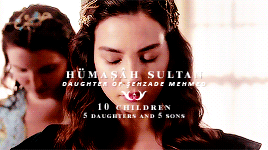
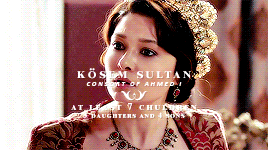

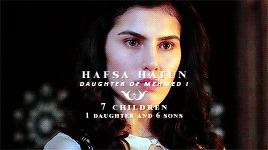


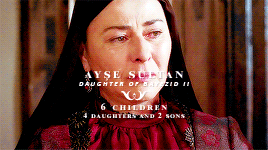

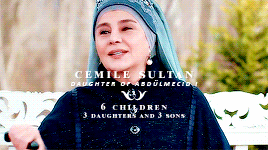
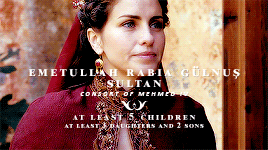
Ottoman women who had the most children
#history#historyedit#ottoman history#humasah sultan daughter of sehzade mehmed#kosem sultan#hatice sultan daughter of selim i#hafsa sultan daughter of mehmed i#fatma hundi hatun daughter of bayezid i#haseki hurrem sultan#ayse sultan daughter of bayezid ii#hatice sultan daughter of mehmed iv#cemile sultan daughter of abdulmecid i#emetullah rabia gulnus sultan#ottomanladiesedit
191 notes
·
View notes
Photo









Ottoman Princesses named: Şâh
Şâh is a word descending from Old Persian, meaning king. It was the title used by emperors and kings of Iran but also by the rulers of the Ottoman Empire, of the Mughal Empire, of the Bengal Sultanate and of Afghanistan. In the Ottoman Empire it was sometimes used as names for princesses, both alone and in composites, and for princes as well.
#history#historyedit#ottoman history#hundi sultan daughter of bayezid ii#sah sultan daughter of bayezid ii#sahzade sultan daughter of bayezid ii#sahihuban sultan daughter of selim i#sah sultan daughter of sehzade mustafa#sah sultan daughter of selim ii#sah sultan daughter of mehmed iii#sah sultan daughter of mustafa iii#ottomanladiesedit#princessesnames
260 notes
·
View notes